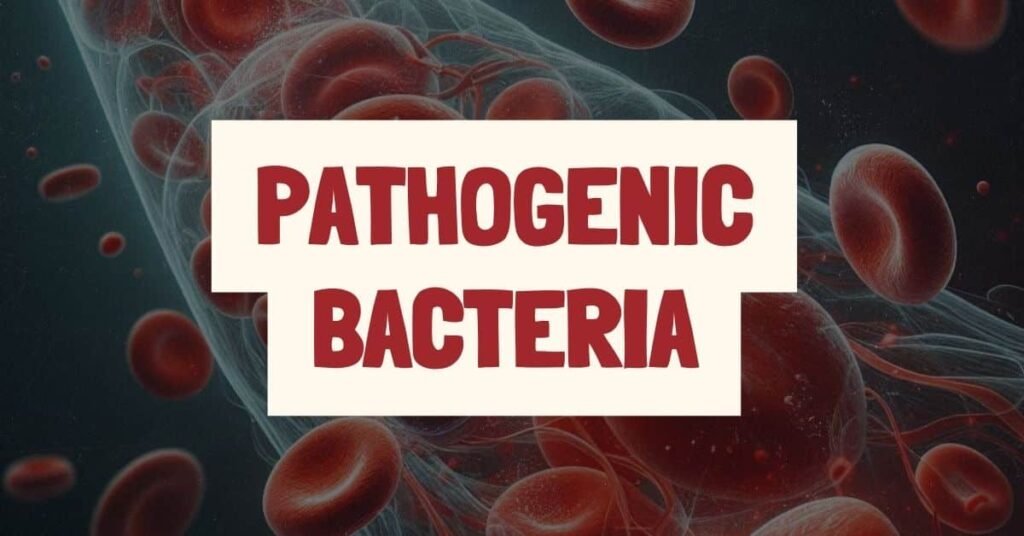Introduction to pathogenic bacteria and their impact on health
Pathogenic bacteria are a diverse group of microorganisms that can cause a wide range of illnesses in humans, from mild skin infections to life-threatening diseases. These bacteria invade the host’s body, evading the immune system and often producing toxins that can damage tissues and organs. The impact of these pathogens on health is profound, influencing not only individual well-being but also public health systems and economies worldwide.
The mechanisms through which these bacteria cause disease are varied and complex, involving a combination of bacterial virulence factors, host susceptibility, and environmental conditions. Understanding the biology and ecology of pathogenic bacteria is crucial for the development of effective treatments and preventive measures. Advances in microbiology and immunology have led to the development of antibiotics and vaccines, which have significantly reduced the morbidity and mortality associated with bacterial infections.
However, the emergence of antibiotic-resistant strains poses a significant challenge, highlighting the need for ongoing research and the development of new therapeutic strategies. The study of pathogenic bacteria remains a dynamic and critical field of biomedical research, with implications for global health and security.
Classification of bacteria: Pathogenic vs non-pathogenic
The classification of bacteria into pathogenic and non-pathogenic categories is foundational in microbiology, significantly influencing both clinical practices and research approaches. Pathogenic bacteria are those capable of causing disease in their host, including humans, animals, and plants.
These organisms can disrupt normal physiological functions through various mechanisms, such as toxin production, cell invasion, and immune system evasion. In contrast, non-pathogenic bacteria are typically harmless and often play beneficial roles in their ecosystems, including human bodies. For instance, the human gut microbiota, composed largely of non-pathogenic species, is essential for digestion, vitamin synthesis, and protection against pathogens.
The distinction between pathogenic and non-pathogenic bacteria is not always clear-cut, as some bacteria can be opportunistic pathogens. These organisms normally exist harmlessly but can become pathogenic under certain conditions, such as when the host’s immune system is compromised. Understanding the classification and characteristics of bacteria is crucial for developing targeted antibacterial therapies, preventing disease outbreaks, and promoting health through the maintenance of beneficial microbial communities. The ongoing study of bacterial pathogenicity and symbiosis continues to unveil the complex interactions between microbes and their hosts, driving advancements in medical and environmental microbiology.

Characteristics of pathogenic bacteria
Pathogenic bacteria possess a range of characteristics that enable them to cause disease in their hosts. These microorganisms have evolved various strategies to invade host tissues, evade the immune system, and establish infections. One of the key features of pathogenic bacteria is their ability to adhere to host cells. This is often mediated by specific molecules on the bacterial surface, which interact with receptors on the host cell, facilitating colonization and infection.
Additionally, many pathogenic bacteria produce toxins that can directly damage host tissues or interfere with normal cellular functions, leading to disease symptoms. Another significant characteristic is their capacity to evade the host’s immune response. Some pathogens achieve this through the secretion of enzymes that break down immune factors, while others may alter their surface antigens to avoid detection.
Furthermore, pathogenic bacteria can form biofilms, complex communities that are highly resistant to antibiotics and the host’s immune defences, complicating treatment efforts. Understanding these characteristics is crucial for the development of effective interventions to prevent and treat bacterial infections. As research advances, insights into the mechanisms of pathogenicity continue to guide the discovery of new therapeutic targets and strategies to combat these microorganisms.
Common diseases caused by pathogenic bacteria
Diseases caused by pathogenic bacteria range from mild to life-threatening conditions, affecting various body systems and leading to significant morbidity and mortality worldwide. These microorganisms are responsible for a variety of common diseases, each characterized by distinct symptoms and modes of transmission.
Respiratory infections, such as tuberculosis and pneumonia, are caused by bacteria that primarily attack the lungs, leading to severe coughing, fever, and difficulty breathing. Gastrointestinal diseases, including salmonellosis and cholera, result from bacteria contaminating food and water, causing symptoms like vomiting, diarrhoea, and dehydration.
Bacterial meningitis, a serious infection of the membranes covering the brain and spinal cord, presents with symptoms such as severe headache, fever, and neck stiffness. Sexually transmitted diseases, such as syphilis and gonorrhoea, are spread through sexual contact and can result in a wide range of complications if left untreated.
Skin infections, like cellulitis and impetigo, manifest as redness, swelling, and pain in the affected area. The impact of these diseases is profound, necessitating ongoing efforts in prevention, diagnosis, and treatment to reduce their burden on public health. Vaccination, hygiene practices, and antibiotic treatments are among the key strategies employed to combat infections caused by pathogenic bacteria.
Modes of transmission for pathogenic bacteria
The modes of transmission for pathogenic bacteria are diverse, enabling these microorganisms to spread between hosts and environments in various ways. Direct contact transmission occurs when bacteria are transferred from an infected individual to another through physical contact, such as touching or sexual activity.
This mode is common in the spread of skin infections and some sexually transmitted diseases. Indirect contact involves the transfer of bacteria through inanimate objects or surfaces, known as fomites, which have been contaminated by an infected person. Foodborne and waterborne transmissions are significant pathways for gastrointestinal diseases, where bacteria contaminate food or water supplies, leading to outbreaks of illness among consumers.
Airborne transmission, though less common for bacteria compared to viruses, involves the spread of bacteria through aerosolized droplets expelled by coughing or sneezing, leading to respiratory infections. Vector-borne transmission occurs when bacteria are spread by carriers such as insects; for example, Lyme disease is transmitted through tick bites.
Understanding these modes of transmission is crucial for implementing effective public health measures to prevent and control bacterial infections, including sanitation practices, food safety measures, and vector control strategies.
Prevention strategies against pathogenic bacterial infections
Preventing infections caused by pathogenic bacteria is essential for maintaining public health and reducing the burden of bacterial diseases. Effective prevention strategies encompass a range of practices aimed at minimizing the risk of transmission and exposure.
Hygiene practices, such as regular handwashing with soap and water, are fundamental in breaking the chain of infection, particularly in healthcare settings and at home. Food safety measures, including proper cooking and storage, help prevent foodborne illnesses caused by bacteria such as Salmonella and E. coli. Vaccination is another crucial strategy, offering protection against certain bacterial diseases like tetanus, diphtheria, and whooping cough.
The use of antibiotics can be a preventive measure in some contexts, such as before surgery to prevent surgical site infections, but their use must be judicious to avoid the development of antibiotic resistance. Public health campaigns and education play a vital role in raising awareness about the modes of transmission of pathogenic bacteria and promoting behaviours that reduce the risk of infection.
Environmental sanitation, including safe water supplies and proper waste disposal, further limits the spread of bacteria in communities. Implementing these prevention strategies requires a coordinated effort from individuals, healthcare professionals, and public health authorities to effectively combat pathogenic bacterial infections.
Treatment options for diseases caused by pathogenic bacteria
Treatment options for diseases caused by pathogenic bacteria have evolved significantly over the years, offering hope and recovery for many affected individuals. The cornerstone of bacterial infection treatment is antibiotics, which work by killing the bacteria or inhibiting their growth. The choice of antibiotic depends on the type of bacteria causing the infection and its sensitivity to specific drugs, determined through diagnostic testing.
In addition to antibiotics, supportive care plays a crucial role in managing symptoms and preventing complications. This may include hydration for those suffering from diarrhoea, oxygen therapy for severe respiratory infections, or pain relief for conditions like urinary tract infections. For certain diseases, such as tuberculosis, a long-term antibiotic regimen is necessary to fully eradicate the infection.
The emergence of antibiotic-resistant strains of bacteria has prompted the development of alternative treatment strategies, including the use of bacteriophage therapy, which involves using viruses that specifically target bacteria. Immunotherapy, which boosts the body’s natural defences against the infection, is also being explored.
Prevention through vaccination remains an effective strategy for some bacterial diseases, reducing the need for treatment. The ongoing challenge of antibiotic resistance underscores the importance of prudent antibiotic use and the need for continued research into new and effective treatment options.
The role of antibiotics in controlling pathogenic bacteria
The role of antibiotics in controlling pathogenic bacteria is pivotal, marking a revolution in medical science since their discovery. These drugs are specifically designed to combat bacterial infections by either killing the bacteria or inhibiting their ability to reproduce and spread. The effectiveness of antibiotics against pathogenic bacteria has significantly reduced the mortality rates associated with bacterial infections, transforming the outcome of diseases that were once considered fatal.
However, the misuse and overuse of antibiotics have led to the emergence of antibiotic-resistant strains of bacteria, posing a serious challenge to public health. This phenomenon, known as antibiotic resistance, occurs when bacteria evolve mechanisms that protect them from the effects of antibiotics. The situation demands a judicious use of antibiotics, where they are prescribed only when necessary and in the appropriate dosage.
Additionally, there is a pressing need for the development of new antibiotics and alternative treatments to stay ahead of evolving bacterial resistance. The role of antibiotics remains crucial in the fight against pathogenic bacteria, but it must be complemented with responsible prescribing practices, public education on the importance of adherence to prescribed treatments, and continuous research efforts.





